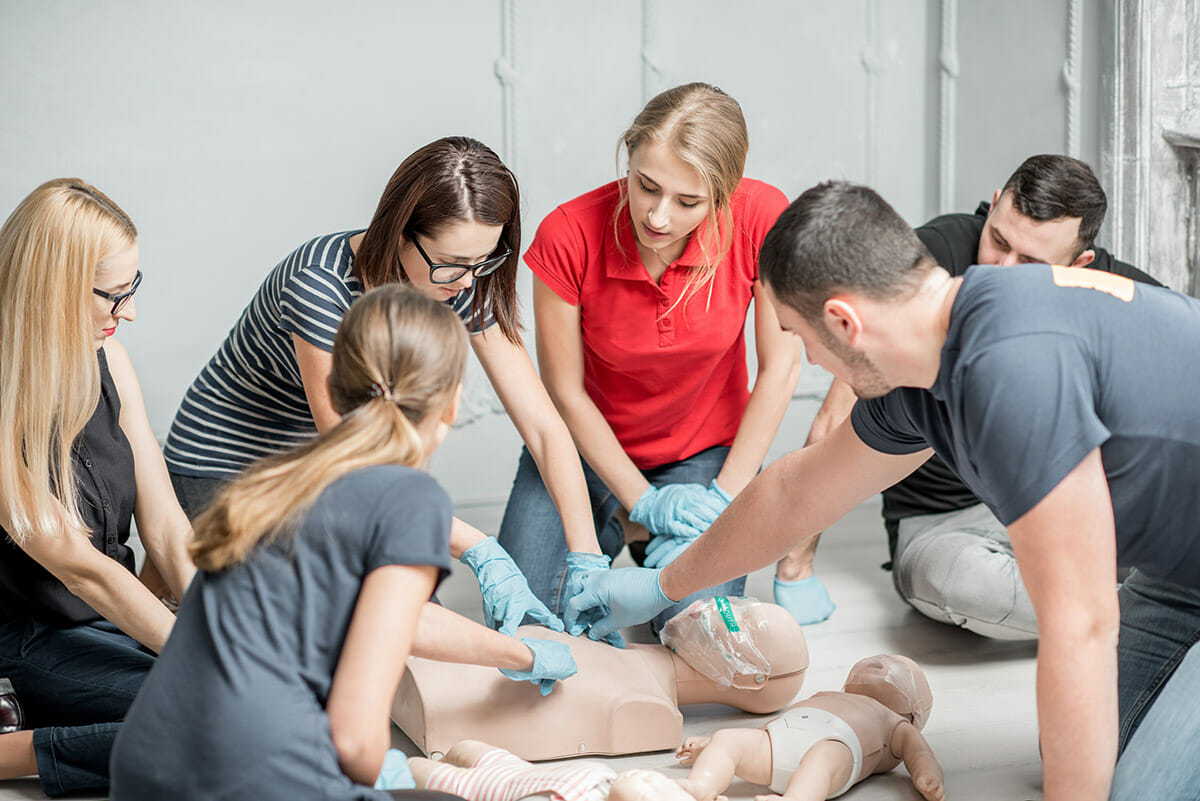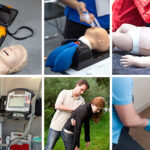Cardiopulmonary resuscitation (CPR) is a procedure that involves restoring the flow of blood in a victim who has suffered cardiac arrest or stopped breathing. CPR can prevent sudden and unexpected death caused by cardiac arrest, as it works to keep the heart functioning when it has ceased to do so on its own. By utilizing chest compressions and artificial respiration, one is able to mimic the natural rhythm of the heart and pump fresh, oxygenated blood throughout the body. This is especially important in keeping the brain alive and functioning. However, CPR is also important for all the other body organs as the presence of oxygenated blood allows them to continue functioning properly and avoid permanent damage. Thus, it can be seen that CPR involves an essential set of skills that should be used in case of an emergency. In order to ensure that you are qualified to provide CPR procedures, it’s important to take a CPR certification course. American CPR Care Association offers quick and simple CPR certification available completely online. Our course can be done at your own pace and from the comfort of your own home. Keep in mind that many professions actually require CPR certification, so it’s important to see if yours is one that does. Healthcare providers and emergency responders are almost always required to have an up-to-date CPR certification. However, there are also many other jobs that may ask you to have your CPR certification, especially if you work with children or any other vulnerable sect of the population. Remember that even if your profession doesn’t specifically require certification, it’s still critical to learn the basics of administering CPR just in case you find yourself in a situation in which you need to care for a victim who has stopped breathing. CPR procedures are trusted and accepted worldwide. They also have a long history and have been updated in various ways over the years. Continue reading to see the ways in which CPR has changed throughout the centuries and how you can utilize updated CPR procedures to save a life.
The History of CPR
18th Century
In the 1700s, CPR procedures were already evolving. The official recommendation was to use mouth-to-mouth resuscitation. In fact, The Academie des Sciences in Paris officially began recommending mouth-to-mouth in the middle of the century. Towards the end of the century, it was actually recommended to use bellows to inflate the lungs when someone had stopped breathing. However, the idea of chest compressions hadn’t come into play yet.19th Century
In the 1800s, the evolution of CPR procedures was somewhat slow. However, at the very end of the century, a German physician named Dr. Friedrich Maass did begin advocating for the use of chest compressions. Unfortunately, at the time, this suggestion wasn’t received well, and instead, the bulk of health professionals continued using open-heart massage as a way to get the blood flowing again.20th Century
The 1900s were when CPR procedures really began to evolve. At the very beginning of the century, Dr. George Crile was the first to report successful resuscitation using chest compressions. He actually began using chest compressions on dogs; however, that practice was quickly adopted by humans as well. By the end of the century, mouth-to-mouth resuscitation was also common practice when used in conjunction with chest compressions. At this point, modern CPR procedures, such as the American Red Cross, recommended mouth-to-mouth resuscitation for drowning victims and sudden cardiac arrest victims. In 1963, the American Heart Association (AHA) had officially endorsed the idea of CPR, and by the 1970s, there was the global acceptance of the CPR procedures that we would consider “modern.” Alternating sets of 30 chest compressions and 2 rescue breaths became the standard for dealing with any adult suffering from heart failure. In the 1980s the American Heart Association began developing guidelines for proper infant CPR as well. Later on, in the early 2000s, the idea of hands-only CPR was introduced, and CPR guidelines were most recently updated in 2015.Key CPR Milestones
The following is a list of the most notable contributions to CPR over the years:- 1891- The year of the first reported chest compressions on a patient. German surgeon, Friedrich Maas performs chest compressions. Maas adapted the chest compression method from Franz Koenig of Gottingeii.
- 1903- American surgeon Dr. George Crile reports the first successful use of chest compressions
- 1904- Dr. Crile performs the first case of closed-chest cardiac massage.
- 1954- James Elam, an American doctor and respiratory researcher, proves expired air provides adequate oxygen to maintain vital functions.
- 1956- Austrian physicians Peter Safar and James Elam create mouth-to-mouth resuscitation.
- 1957- US military adopts mouth-to-mouth as a field procedure to revive unresponsive cardiac emergency victims.
- 1972- American physician Leonard Cobb leads Medic 2, the first CPR training directed toward US citizens
Modern Updates to CPR Training
As previously mentioned, the last major update to CPR procedures was in 2015. Training and performance standards are revisited and updated every 5 years in order to ensure that everyone is receiving the best possible information. Some of the most recent updates are as follows:- The rate of chest compressions increased from 100 BPM to 120 BPM. In order to keep this rhythm, it’s often suggested that you do your compressions to the beat of “Staying Alive” by the Bee Gees.
- In addition, the idea of hands-only CPR has been endorsed as an effective way to provide life-saving rescue procedures. However, it’s still recommended that you use both rescue breaths and chest compressions, especially when dealing with infants and children, who desperately need oxygen in their systems even more than adults. Regardless, though, the American Heart Association advocates that, indeed, chest compressions alone are much better than not supplying any assistance.
- Finally, chest compressions are now recommended to only go to a maximum depth of 2.4 inches. The minimum depth of 2 inches has remained the same.
Current CPR Procedures
While CPR procedures have indeed gone through a significant evolution, there are current standards that have been in place for a while and should be continued to be followed.- First, it’s important to evaluate your surroundings for safety. Make sure you secure your situation before beginning to offer CPR to someone suffering from cardiac arrest.
- Next, make sure you are immediately asking someone nearby to get an AED pacemaker if it’s available. Also, this same person should call 911. Thankfully, with the addition of cell phones, reaching out to emergency personnel has never been easier. If there is no one nearby who can help, grab the AED yourself (if available) and begin administering CPR procedures while you also call 911. They will remain on the line with you until help arrives.
- Most importantly, you must administer alternating chest compressions and rescue breaths. Apply 30 chest compressions and then offer two rescue breaths. Ensure that the victim’s chest is rising when you offer your breaths.
- To offer chest compressions, place both hands on top of each other and press hard and fast into the victim’s chest at a rate of 120 BPM. Supply 30 chest compressions before moving on to rescue breaths.
- To offer rescue breaths, tilt the victim’s head back in order to open up the airway. Then, pinch their nose shut and cover their mouth entirely with yours. Breath into their mouth twice, ensuring that their chest is rising with each breath.







